
12 minute read
Notes from from the Field
This section is devoted to showing images of wetlands and their biota. We encourage contributions from anywhere in the world. If interested in contributing please contact Ralph Tiner, editor at ralphtiner83@gmail.com.
For this issue, I asked Steve Eggers, senior author of “Wetland Plants and Wetland Communities of Minnesota and Wisconsin”1, if he would be willing to share some of his excellent photographs of wetland plants to brighten up the usual drab winter we experience in North America at this time of the year. He agreed and provided 32 images and accompanying text that you’ll see below each photograph. Enjoy! n
Showy Lady’s-Slipper (Cypripedium reginae).A spectacular orchid well known and revered, selected as the state flower of Minnesota. Common habitats include coniferous swamps, hardwood swamps, bogs, fens and floating mats. Interestingly it can tolerate pH ranges from acidic to alkaline. In its natural habitat, an individual requires at least 14 to 16 years to produce its first flower (Smith 1993). Photograph location was an opening in a coniferous bog, Lake Bemidji State Park, Beltrami County, Minnesota. Yellow Water Crowfoot (Ranunculus flabellaris). Another aquatic buttercup found in quiet waters of lakes and streams; also occurs in marshes and is sometimes stranded on muddy shores. Photograph location was the shoreline of Mille Lacs Lake, Mille Lacs County, Minnesota.
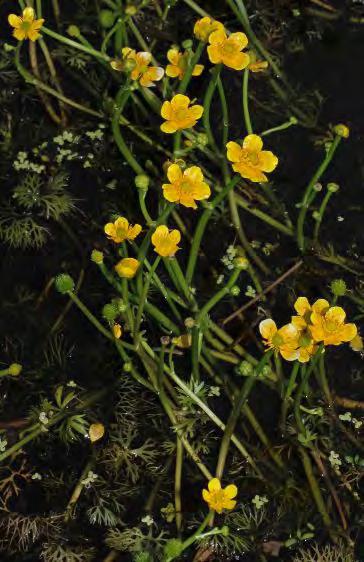
Swamp Thistle (Cirsium muticum). A native thistle of sedge meadows, wet to wet-mesic prairies and calcareous fens (another common name is fen thistle). Instead of flower heads with stiff spines as in most other thistles, flower heads are weakly spined and sticky because of a gummy resin. This specimen was in a calcareous fen community within the Savage Fen Scientific and Natural Area, Scott County, Minnesota.

Ram’s-Head Lady’s-Slipper (Cypripedium arietinum). Smallest and rarest of lady’s-slippers in Minnesota and Wisconsin listed as threatened in both states. It occurs in a wide variety of habitats from coniferous swamps to jack pine forests to mixed conifer-hardwood forests. To some the lip looks like a charging ram—thus the common name. This specimen was in a tamarack swamp in Gully Fen Scientific and Natural Area, Polk County, Minnesota. Small Yellow Lady’s-Slipper (Cypripedium parviflorum var. makasin). Similar in size to the small white lady’s-slipper and the two can occur together. Habitats include rich coniferous swamps as well as hardwood swamps and calcareous fens. The larger C. parviflorum var. pubescens has yellowish sepals as opposed to the mahogany sepals of var. makasin. Larix Wildlife Management Area, Polk County, Minnesota. Pink Lady’s-Slipper (Cypripedium acaule). A relatively common lady’s-slipper in Minnesota and Wisconsin occurring in a variety of habitats from the wet end of the spectrum (e.g., coniferous bogs) to dry (e.g., upland pine forests). It prefers shaded, acidic, nutrient-poor conditions and each plant produces only two basal leaves. This specimen was at the edge of a cedar swamp in Aitkin County, Minnesota.
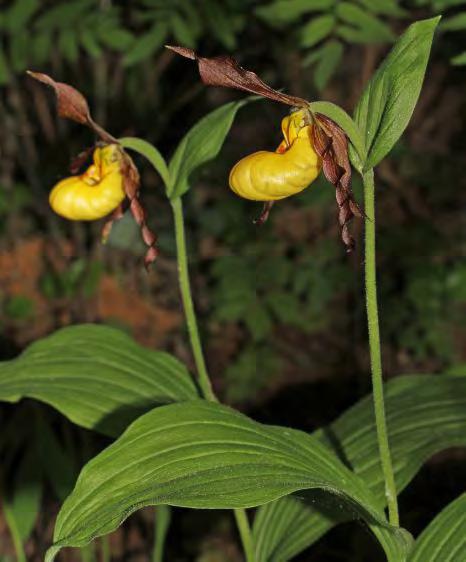
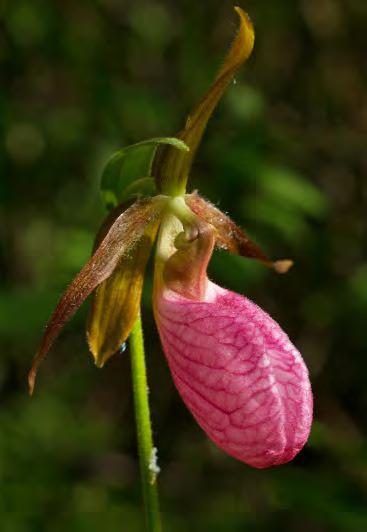
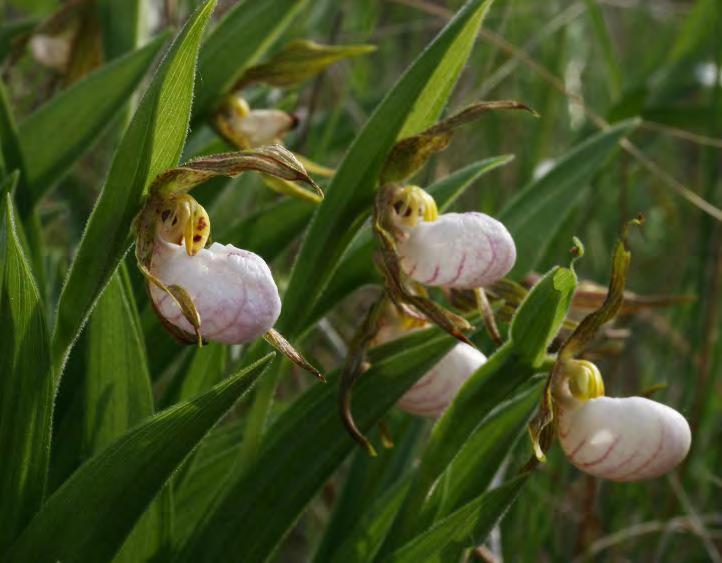

Small White-Lady’s Slipper (Cypripedium candidum). Primarily an orchid of wet to wet-mesic prairies and calcareous fens. The former were once abundant in Minnesota and Wisconsin but have suffered >99 percent loss. The latter—calcareous fens—were rare even at the time of European settlement. Thus, today this orchid is rare and listed as threatened in Wisconsin and of special concern in Minnesota. When searching for this orchid, which is much smaller (lip not much larger than a thumbnail) than the more common showy lady’s-slipper, look on the top of sedge tussocks. Photograph location was a calcareous fen within the Savage Fen Scientific and Natural Area, Scott County, Minnesota. Intermediate Sundew (Drosera intermedia). A carnivorous species characteristic of bogs and also colonizes disturbed, sunny, acidic, wet habitats. This example was in acidic, saturated sands of a road ditch within the Black River State Forest, Jackson County, Wisconsin.

Wild Calla (Calla palustris). A member of the Arum family found in bogs and shallow, acidic waters. Fruit is a cluster of berries turning green to red. Photograph location was a bog in Mille Lacs Kathio State Park, Mille Lacs County, Minnesota. Grass Pink (Calopogon tuberosus). An orchid of coniferous swamps and bogs usually under a canopy of tamarack, white cedar or spruce. Also occurs on floating mats of sedges or Sphagnum mosses. Distinctive features are a single, grasslike leaf and raceme of two or more flowers. White-flowered specimens also occur but are very rare. Black River State Forest, Jackson County, Wisconsin. Broad-Leaved Arrowhead (Sagittaria latifolia). Another common name is duck potato due to the starchy tubers, a food source for Native Americans and early European settlers and important for wildlife as well. Leaf width/shape varies considerably from the broad arrowhead shape shown by the photograph, to more narrowly arrowhead to elliptical shapes, to completely submerged ribbon-like leaves—thought to be a response to varying water depths. Photograph location was a deep marsh within Weaver Bottoms, Pool 5 of the Mississippi River, Wabasha County, Minnesota.


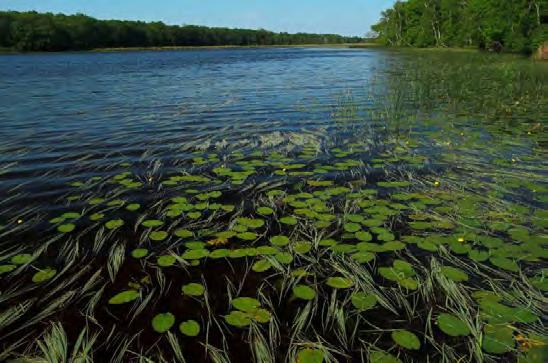
Northern wild rice (Zizania palustris) goes through a floating-leaf stage, which occurs during June in Minnesota, before becoming emergent and growing to a height of 2-3m. A remarkable plant considering it is an annual starting from seed in murky, submerged depths with low dissolved oxygen and minimal sunlight penetration and must grow through thatch and other debris covering the substrate. Yellow water-lily (Nuphar variegata) is a common associate. The dark green, cylindrical, emergent stems visible are hardstem bulrush (Schoenoplectus acutus). Rice Lake National Wildlife Refuge, Aitkin County, Minnesota. Late summer (August) view of a tussock sedge (Carex stricta) meadow with spotted joe-pye weed (Eutrochium maculatum) and boneset (Eupatorium perfoliatum) as prominent wildflowers. Community is a sedge fen on groundwater-fed, sloping, deep (>2m) muck soils at the toe of a bluff along the Minnesota River valley in Fort Snelling State Park, Dakota County, Minnesota. Radiocarbon dating found that muck deposits in calcareous fens of the lower Minnesota River valley are around 10,000 years old (Almendinger and Leete 1998).
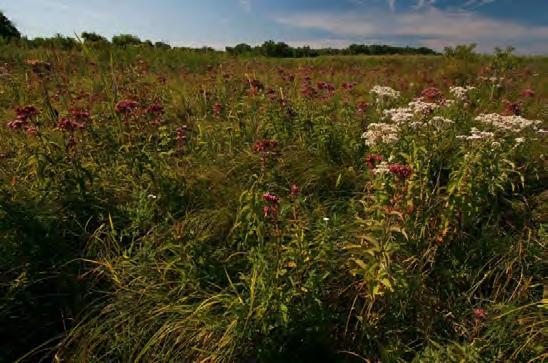

Pitcher Plant (Sarracina purpurea). The familiar carnivorous plant of bogs thriving in nutrient-poor conditions, preferring open, sunny habitats on the Sphagnum moss mat, but may persist under more shaded conditions. Occasionally occurs in calcareous fens as well. The photograph is from Bark Bay Slough State Natural Area, Bayfield County, Wisconsin, an embayment of Lake Superior. Swamp Rose (Rosa palustris). True to its name, this rose is found in hardwood and coniferous swamps, shrub swamps, marshes, and along streambanks. It reaches its northwestern range limit in Wisconsin (does not occur in Minnesota). Characteristics include a pair of stout, curved thorns below each leaf node as well as pedicels and hypanthium with stalked glands (stipitateglandular). Photograph location was an alder thicket within Black River State Forest, Jackson County, Wisconsin. Arrowhead Sweet Coltsfoot (Petasites frigidus var. sagittatus). Blooms much earlier (April-June) than most other members of the aster family found in Minnesota and Wisconsin. Basal leaves are large (up to 30cm long), arrowhead-shaped, dark green above and white-woolly below—unmistakable. Found in northern portions of Wisconsin and Minnesota in wooded swamps, shrub swamps and sedge meadows. Listed as a threatened species in Wisconsin. This specimen was in a shrub swamp in St. Louis County, Minnesota.

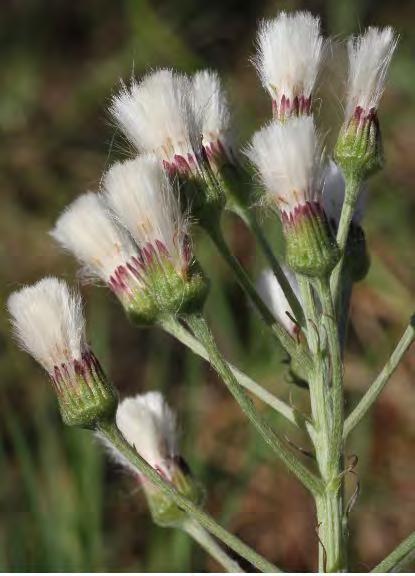
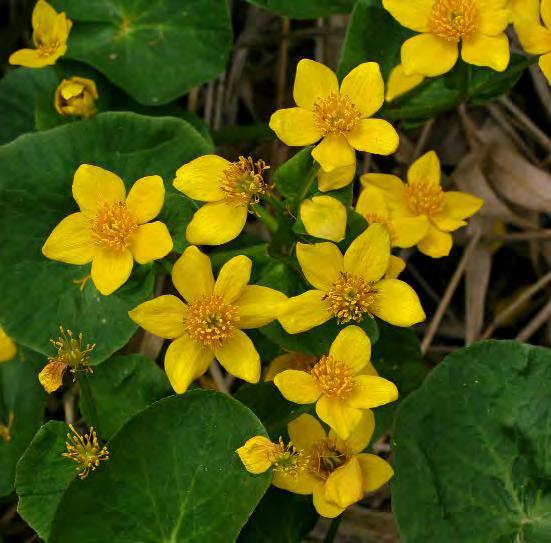
Marsh Marigold (Caltha palustris). One of the first wildflowers to bloom in spring (April-May), often found in groundwater seepages within hardwood swamps, sedge meadows and shrub swamps as well as along streams. A common associate is skunk cabbage (Symplocarpus foetidus). Savage Fen Scientific and Natural Area, Scott County, Minnesota. Marsh Milkweed (Asclepias incarnata). When in bloom, seemingly always being visited by butterflies as well as a host of other insects. Additionally, it is a food plant for Monarch caterpillars and many bird species use the fibers from old stems for nest-building. Sedge meadows are the most common habitat for marsh milkweed, but it also occurs in shallow marshes, shrub swamps and calcareous fens. The photograph was taken in a calcareous fen within the Seminary Fen Scientific and Natural Area, Carver County, Minnesota.
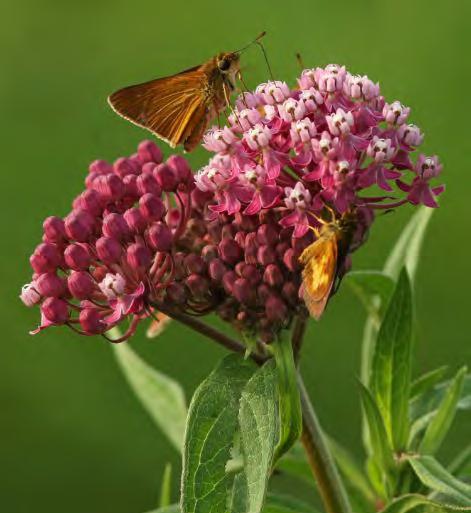

Swamp Lousewort (Pedicularis lanceolata). Primarily a species of wet to wet-mesic prairies and calcareous fens—in other words sunny, wet habitats. Pale yellow, two-lipped, “snapdragon” like flowers. Iron Horse Prairie Scientific and Natural Area, Dodge County, Minnesota. Monkey Flower (Mimulus ringens). A distinctive species found in wet, sunny habitats including wet meadows, streambanks and shores. Photograph location was the edge of a shallow marsh within the Blaine Preserve Scientific and Natural Area, Anoka County, Minnesota. Lesser Fringed Gentian (Gentianopsis procera). Characteristic of calcareous fens; also occurs on calcareous soils of wet to wet-mesic prairies and along shores, particularly if groundwater seepages are present. It is a very late blooming species— September into even October. Photograph location was a calcareous fen within Savage Fen Scientific and Natural Area, Scott County, Minnesota.
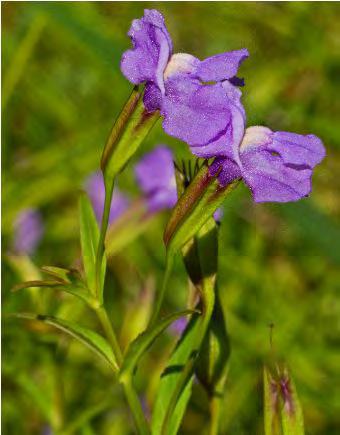

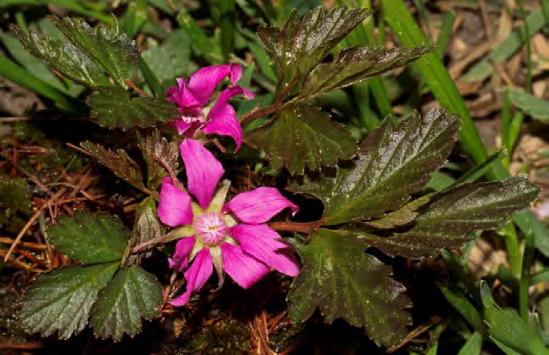
Arctic Raspberry (Rubus arcticus). A circumpolar species that extends into the northern Lower 48 including northern Minnesota and one northwestern Wisconsin county. Typical habitats include the Sphagnum moss mats of open and coniferous bogs. St. Louis County, Minnesota.
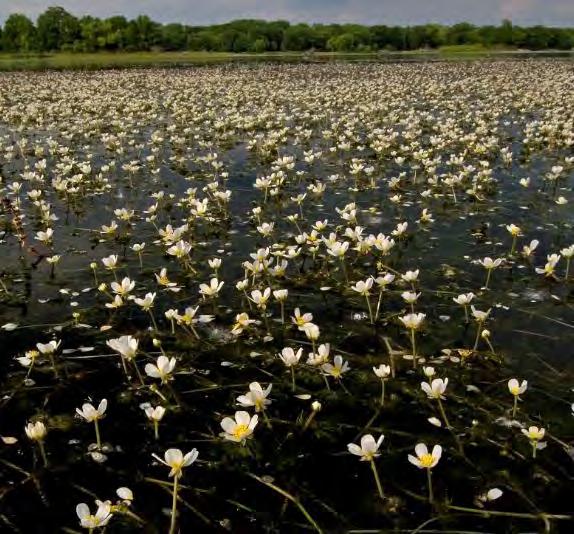
White Water Crowfoot (Ranunculus longirostris). An aquatic buttercup occurring in quiet waters of lakes and streams. Extensive stands can be formed as shown by the photograph. Lake Marion, Dakota County, Minnesota.
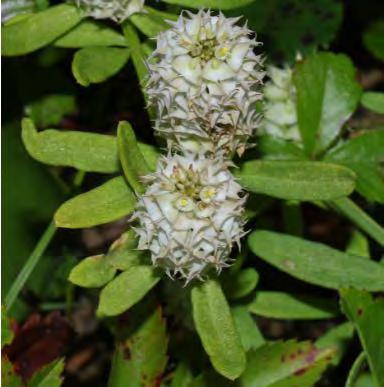
Cross-Leaved Milkwort (Polygala cruciata). Leaves in whorls of 4 appear to form a cross, thus the common name. In Minnesota, it is largely restricted to sedge meadows in the Anoka Sand Plain (an area within and north of the Twin Cities) and is listed as endangered. In Wisconsin, it is most prevalent in the wetland acid sands and peats of Glacial Lake Wisconsin (west-central portion of the state), but also in some southern counties. Black River State Forest, Jackson County, Wisconsin. White Water-Lily (Nymphaea odorata). With most of the focus on showy white flowers contrasted against dark green floating leaves, many don’t see another major feature of this plant—the impressively large, thick rhizomes. Flowers are fragrant, close at night and open in the morning. White water-lily is common to dominant (can form dense colonies covering the water’s surface) in lakes, ponds, slow moving streams and Mississippi River backwaters. Lake Bemidji State Park, Beltrami County, Minnesota. Yellow Water-Lily (Nuphar variegata). A common aquatic plant of lakes, ponds and slow moving streams and backwaters. Photograph location was an oxbow of the La Crosse River, Veterans Park, La Crosse County, Wisconsin.
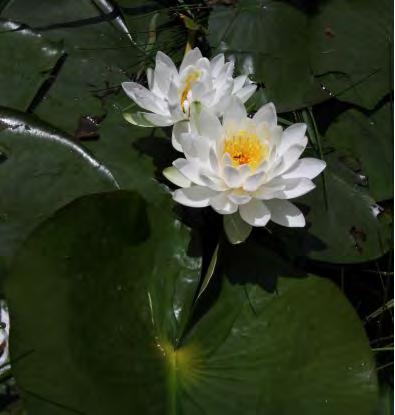
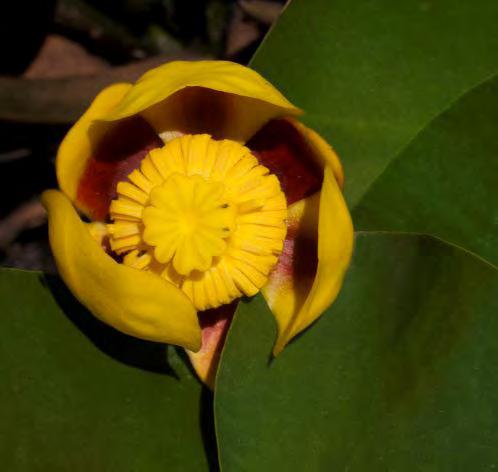
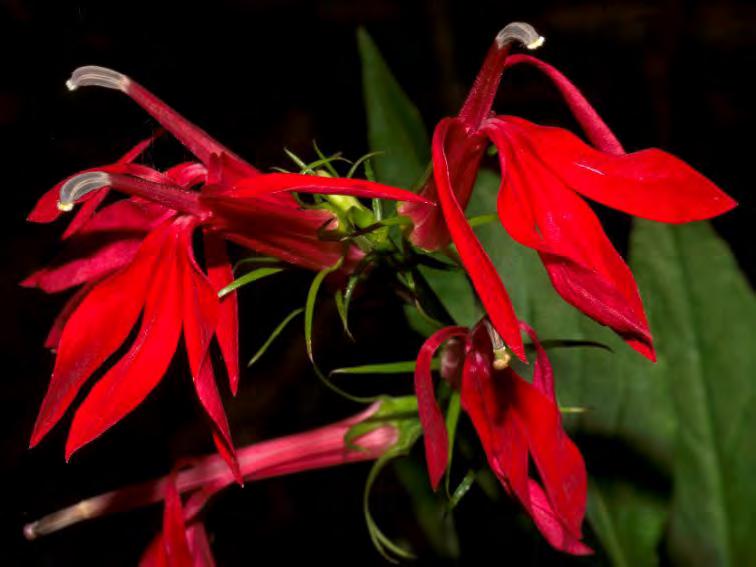
Cardinal Flower (Lobelia cardinalis). Striking scarlet-red flowers that stand out like neon lights in the otherwise dim understory of floodplain forests in late summer. Also found in wet meadows and along streambanks. Well worth braving the (typical) hordes of mosquitoes to take a closer look and photograph. Photograph location was a floodplain forest within Weaver Bottoms, Pool 5 of the Mississippi River, Wabasha County, Minnesota. Jewelweed (Impatiens capensis). Another name is touch-me-not because when seed capsules are ripe a mere touch results in an explosive scattering of seeds, which is quite impressive. Crushing the succulent stem and applying the juice to the skin is said to alleviate symptoms of poison ivy (Toxicodendron spp.) and nettle (Urticaceae) stings. Jewelweed is a common annual of floodplain forests, hardwood swamps, wet meadows, marshes and along streams and lake shores. This specimen was along the shoreline of a man-made cranberry reservoir in Monroe County, Wisconsin.
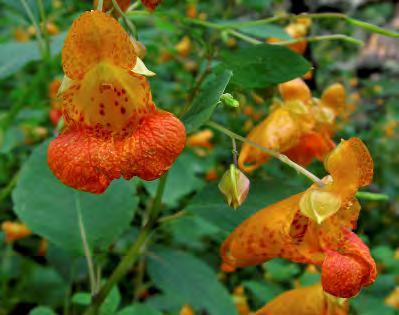

Giant Sunflower (Helianthus giganteus). Impressive, robust plant growing to 3m in height. Stems are often purplish (but may be green) and rough due to spreading hairs. A characteristic species of wet prairies and also occurs in other wet, sunny habitats. Photograph location was a sedge meadow within Savage Fen Scientific and Natural Area, Scott County, Minnesota.
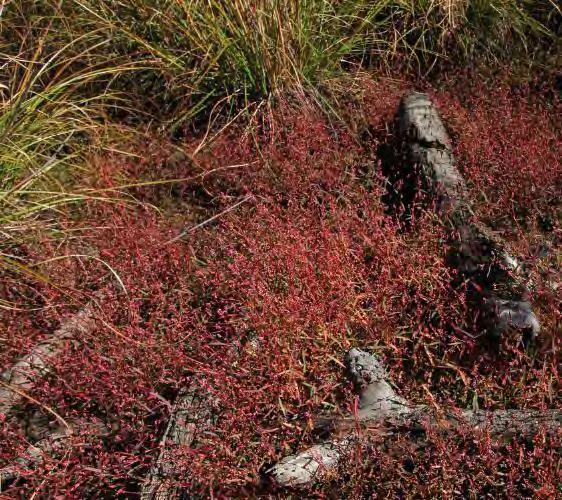
False Water-Pepper (Persicaria hydropiperoides). A species of marshes, shorelines and ditches, often in shallow water. Common name is accurate as leaves lack the sharp, peppery taste of water-pepper (P. hydropiper). Photograph location was the edge of a wire-grass sedge (Carex oligosperma) meadow in Black River State Forest, Jackson County, Wisconsin. Ironweed (Vernonia fasciculata). Sunny, saturated soil habitats are preferred including wet prairies, calcareous fens and sedge meadows— blooming in late summer (August-September). This specimen was in a wet meadow in Vernon County, Wisconsin.
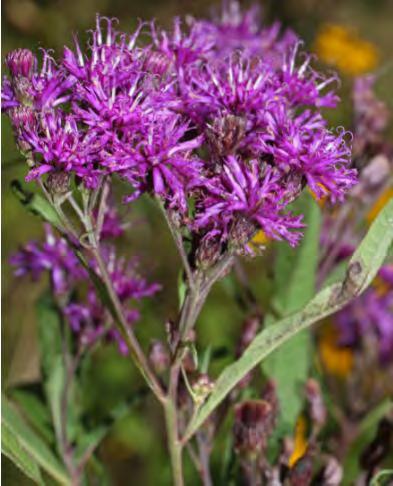
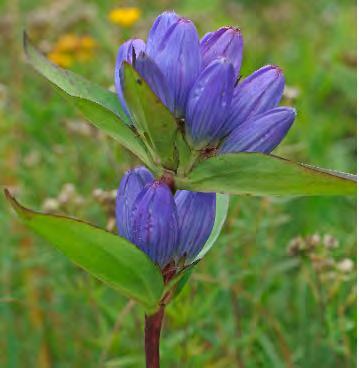
Bottle Gentian (Gentiana andrewsii). Most frequently occurs in wet to wet-mesic prairies, but also wet meadows and openings in hardwood swamps. This specimen was in a wet-mesic prairie within Iron Horse Prairie Scientific and Natural Area (SNA), Dodge County, Minnesota. This SNA has an interesting history in that is was saved, inadvertently, by the railroad (thus “iron horse”). It consists of a triangular- shaped, 35-acre area created by two diverging railroad spurs constructed in the late 1800s. As “railroad land” it was ignored while >99 percent of prairies in Minnesota were lost to the plow and urban development over the next century. It was discovered in the 1980s and today is the largest and finest example of tallgrass prairie in southeastern Minnesota.







